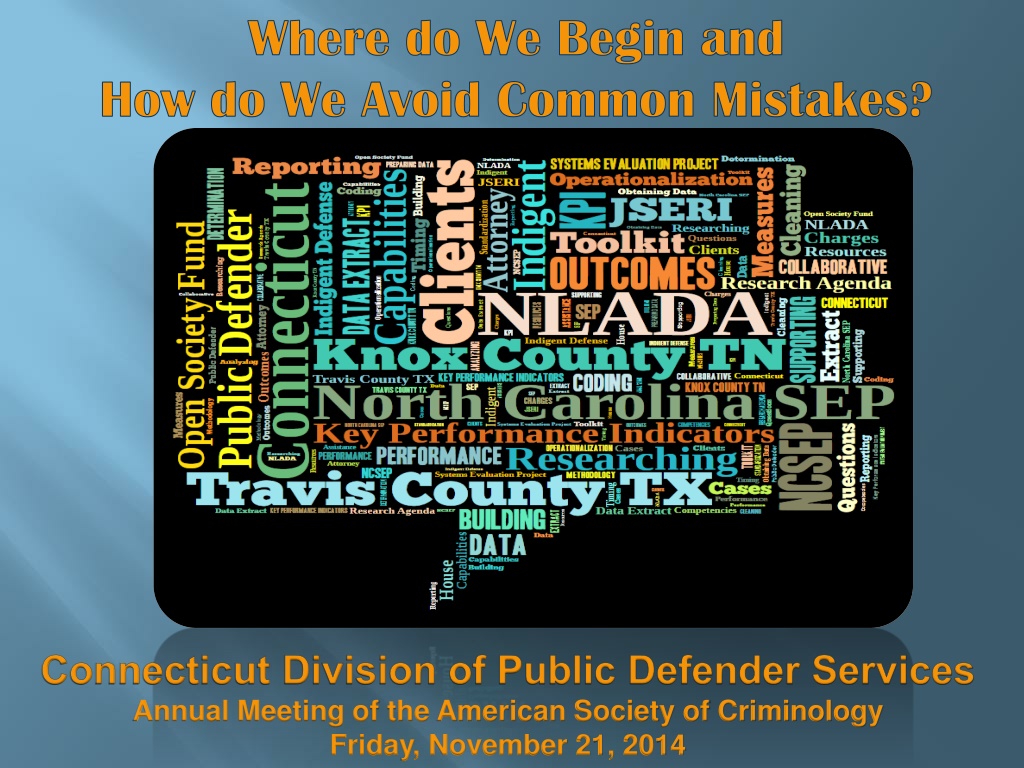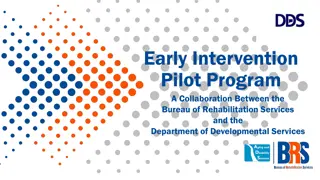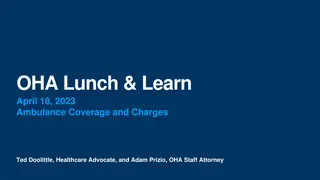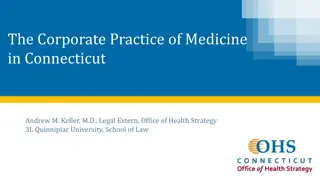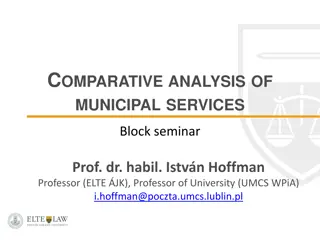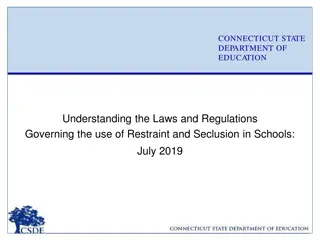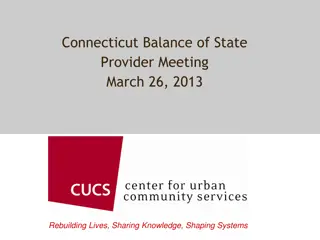Effective Strategies for Public Defender Services in Connecticut
Explore key insights from the annual meeting of the American Society of Criminology regarding the Connecticut Division of Public Defender Services, including the establishment, structure, and challenges faced. Learn why the division embraced in-house research capabilities, staff requirements, project considerations, and expectations for successful implementation.
Download Presentation

Please find below an Image/Link to download the presentation.
The content on the website is provided AS IS for your information and personal use only. It may not be sold, licensed, or shared on other websites without obtaining consent from the author. Download presentation by click this link. If you encounter any issues during the download, it is possible that the publisher has removed the file from their server.
E N D
Presentation Transcript
Where do We Begin and How do We Avoid Common Mistakes? Connecticut Division of Public Defender Services Annual Meeting of the American Society of Criminology Friday, November 21, 2014
Connecticut: Our Story Factors to Consider What you can do Differently
Overview of Connecticut Division of Public Defender Services: Statewide Indigent Defense System established by statute in 1975 Governed by a seven member Commission Autonomous body within the State Judicial Department 400+ employees Offices in 13 Judicial District Courts, 20 Geographical Area Courts, 13 Juvenile Matters Courts and seven specialized units Assigned Counsel Unit oversees 550 Contract Attorneys for Conflict Cases 99,354 cases assigned to Public Defenders and Assigned Counsel during the 2012/13 Fiscal Year Internal Case Tracking System to monitor caseflow Information (data collection) department expanded in 2010 to include Research Data collected on all criminal and MV cases within the Judicial Branch/Court Operations Criminal Motor Vehicle System (CRMVS). Overseen by the Chief Court Administrator
WHY WE JUMPED IN HEADFIRST We asked to be one of the pilot sites for the along with TN, TX and NC because SEP: Help us build in-house research capabilities Fit well with our newly formed research agenda Supported our belief in creating a network of Indigent Defense researchers who share and collaborate Could give us the ability to provide evidence-based results to our legislature Provided expert assistance from NLADA/NCSEP in selecting indicators that reflect our goals and objectives
Available Staff Existing Projects Research Capabilities Data Availability Agency Priorities Initiatives State Criminal Justice
TIMING: Find out where this fits or does not fit within agency, state and CJ projects CAPABILITIES and RESOURCES: Make sure you have the resources: software, physical space etc. The staff: practice experts, researcher , administrative support, clerical support and someone familiar with the data and how it was collected. EXPECTATIONS: Determine who is able and willing to help with this project, what they bring to the table and how much time they can provide. Be up front with what you expect of them and the timeline of the project.
Obtaining the Data Extract Stake out the right people Get Support Arrange a meeting with the data keepers Prepare for the meeting Preparing the Data Preparing the Data Did you get the number of cases and types of data you requested? Are the fields consistent with what you requested? Is the data valid and reliable?
Reach out with questions and for support: Jennie Albert, LCSW Manager of Information Services and Research Connecticut Division of Public Defender Services 30 Trinity Street, 4th Floor Hartford, Connecticut 06106 (860) 509-6400 Email: jennie.albert@jud.ct.gov
